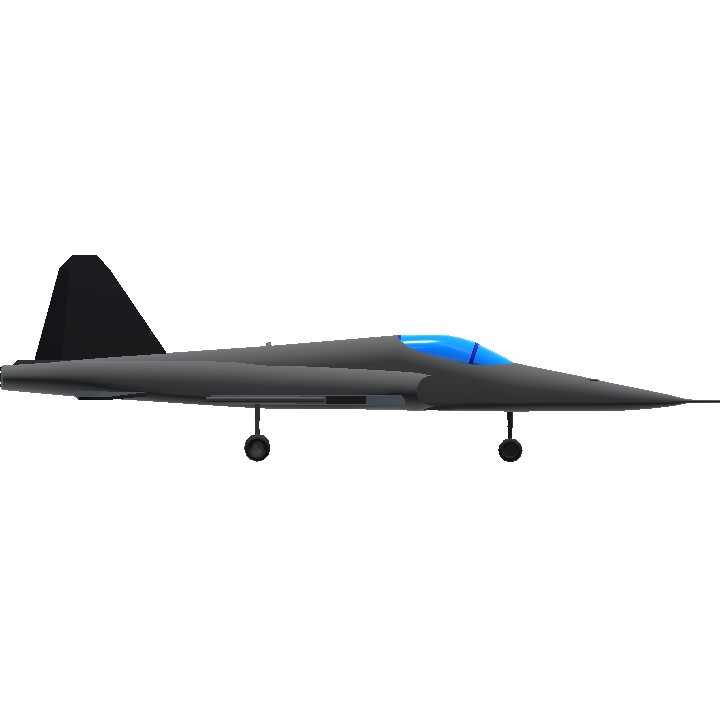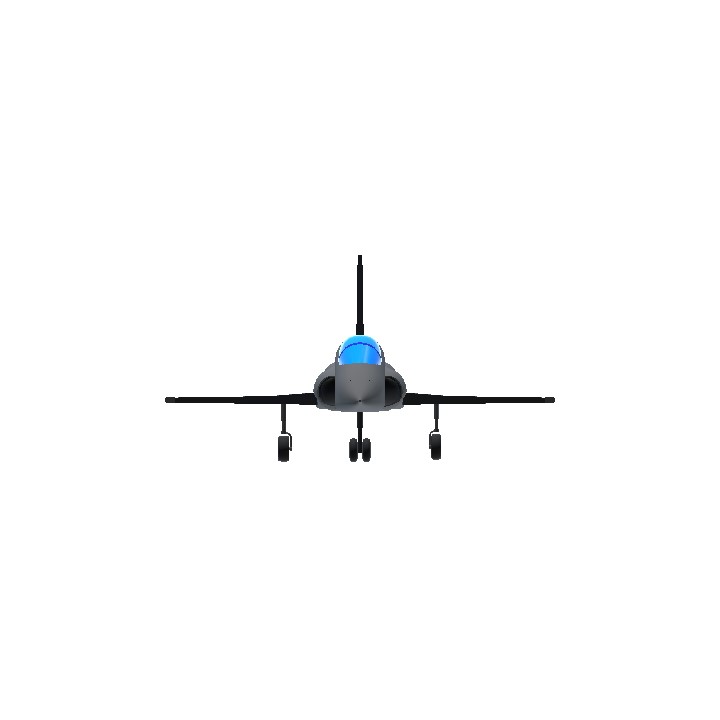Made for MAPA Challenge by WinsWings
Second version now with weapons(click)

ULTRA MOBILE FRIENDLY AI CAPABLE
WIKI
The Northrop F-5E Tiger is a tactical air defense and ground attack fighter, built and developed in the United States and massively exported. The F-5E, a more powerful version of the F-5A Freedom Fighter, has become one of the most operated planes in the world. The original F-5A variant was combat tested in Vietnam in the Skoshi Tiger Program. The F-5E is extremely maneuverable and fast, making it an excellent aircraft for aerial combat.
GALLERY

Development of the F-5 began in 1954, when a Northrop team toured smaller NATO and SEATO countries to examine the defense needs of those countries. From the studies resulting from these visits, the company identified a clear need for a low-cost multifunctional device, which materialized as the light fighter N-156F. The USAF was initially not interested in the proposal, as it did not need a light fighter. However, it did need a new trainer to replace the Lockheed T-33, and in June 1956 the USAF announced that it would acquire the T-38 Talon trainer version, which entered service in March 1961.

Northrop decided to continue with the F-5 program as a private project, in July 1959, the plane made its first flight. Three years later the Department of Defense selected the F-5 for the Military Assistance Program (MAP). US allies looking for a low-cost fighter began to be attracted by the small and agile plane. On April 25, 1962, the US Department of Defense announced that the N-156F had been chosen for the Military Assistance Program (MAP). America's NATO and SEATO allies could now acquire a quality supersonic aircraft at reasonable prices.

On August 9, 1962, the aircraft was officially designated the F-5A Freedom Fighter. Optimized for ground-attack missions, the F-5A had only limited air-to-air capability and was not equipped with a fire control radar (FCR). The F-5B was the two-seat version of the "A" model, for training and attack missions. Although all production F-5As were assigned to MAP, in October 1965 the USAF "borrowed" 12 F-5As from MAP stockpiles and sent them to Vietnam with the 4503rd Tactical Fighter Wing (4503rd TFW ) for operational testing. The program was given the codename Skoshi Tiger ("Little" Tiger), and it was during these operations that the F-5 was nicknamed the Tiger.[citation needed] With the start of the Vietnam War, the losses of the F-4 Phantom were much higher than expected. In that, the USAF ordered 200 F-5As. Although it was the lightest, least sophisticated and almost unarmed, its casualties were lower than those of other planes in use (F-4 Phantom and F-105 Thunderchief), as it was less hit since its maneuverability allowed it to escape fire. antiaircraft.

Large orders for the Vietnamese Air Force followed. Production by other companies as well, such as Canadair (Canada), CASA (Spain), FFA (Switzerland), Hanjin (South Korea) and AIDC (Taiwan). Easy to fly and pilot, with low acquisition, operation and maintenance costs, combined with its exceptional performance, made the F-5 a new reference standard. In addition, it had accessible and easy-to-acquire spare parts. When all else failed, the F-5 was available. During the Iran-Iraq War (between 1980 and 1988), Iranian F-14s, without spare parts and trained pilots, were used as airborne radars, to illuminate targets for the F-5s, the only fighters that remained operational.

world modernization Of all the projects carried out by Northrop, the F-5 was the least outstanding aircraft, and it is certainly the one that achieved the greatest worldwide success, compared to later failures.[citation needed] The Northrop Grumman company still manufactures structural parts and components for the plane, facilitating the maintenance of the planes. Several F-5E/F modernization programs have been developed around the world, such as the F5 Tiger III of the Chilean Air Force. The modernization of panels is fundamental in current times. Cutting-edge planes such as the North American F/A-18 Super Hornet and the French Dassault Rafale have state-of-the-art electronic panels, in which the pilot can use vocal commands for greater ease and greater interaction.

INSTRUCTIONS IN GAME
Specifications
General Characteristics
- Predecessor MAPA Challenge [CLOSED]
- Successors 2 airplane(s) +24 bonus
- Created On Android
- Wingspan 25.7ft (7.8m)
- Length 47.5ft (14.5m)
- Height 13.5ft (4.1m)
- Empty Weight 6,984lbs (3,168kg)
- Loaded Weight 12,314lbs (5,585kg)
Performance
- Power/Weight Ratio 4.379
- Wing Loading 55.7lbs/ft2 (272.1kg/m2)
- Wing Area 221.0ft2 (20.5m2)
- Drag Points 3193
Parts
- Number of Parts 50
- Control Surfaces 5
- Performance Cost 253







Finally it’s here
@OPaiTaOn eu tô nesse grupo e é mó legal só que o povo manda MUITA mensagem
@OPaiTaOn car todo mundo e normal lakkkkkkkkkkkkkkk e so avisado que o grupo e so de sp mesmo
@PilotRyder oxe kkkkkkkkk eu só não vo entra em grupro de estranho kkkkkkkkkkkkk
man pq vc nunca me responde?kkkk
@rexzion thanks
nice shape
@WinsWings I'm working on it right now
this will be a nice aggressor AI airplane if equipped with missiles later
Awesome! Good luck with the change.